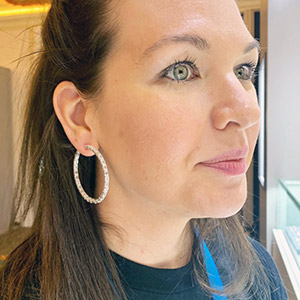
A new study by the Influencer Marketing Factory on how consumers respond to the commerce elements available through social media apps showed an age discrepancy in willingness to make purchases through apps.
More than half of the survey respondents under the age of 45 said they had purchased via social commerce in the past year, but only 23.6% of those older than 54 had.
The Influencer Marketing Factory, an agency that creates influencer marketing campaigns, interviewed 1,000 U.S. consumers for the study, asking them questions to gauge their reasons for and against shopping online, as well as looking at current and future commerce trends.
While making purchases in-app is very popular in China, Westerners have been more hesitant to buy products in the same place they double tap friends’ photos: Sales through social media constitute 16.3% of total e-commerce sales in China, but only about 5% in the United States, according to the study report.
In short, it seems Stateside consumers are reluctant to buy through social media because they don’t trust it, or they don’t trust it as much as they do retail websites. Most social apps have been revving their e-commerce engines for some time, but getting consumers on board—the key to success—has been no easy feat.
In the survey, 62.4% of consumers said they prefer e-commerce platforms (such as Amazon) to social media commerce. Only 22% signaled a preference for social commerce, and 15.6% chose neither.
Asked if they’d purchased via social commerce in the past year, 57.7% of respondents ages 25–34 said yes, as did 52.4% in the 35–44 age group, and 51.3% of those 18 to 24. But the “yes” response dropped to 36.8% among respondents ages 45–54 and 23.6% of those 55 and older.
Overall, 43.4% of respondents had made a purchase via social media in the past year. When the 56.6% who answered no were asked why they hadn’t, the reason cited the most (by 30.6%) was they don’t trust social media for purchases, followed (22.9% of responses) by not wanting to share sensitive information, like address and credit card number.
To the question of why users purchase through social, the top answer may be surprising: free shipping (named by 21.76%). Other popular responses were limited-time offers (20.47%) and the discovery of new products (20.08%). Despite these answers, 75.3% of those who do make social commerce purchases said they would still buy if there were no coupons or discounts available.
The categories most purchased by those who do shop on social media, according to the study, were apparel (named by 25.6%), beauty products (19.4%), and home goods (13.5%).
Among all age groups, it takes on average one or two times of product exposure before they make a purchase, according to the survey. In rating the social commerce experience and checkout experience on specific social apps, Facebook led the way (Pinterest, despite its push for e-commerce, ranked last in both).
For retailers in the midst of the holiday hustle, this survey brings good tidings: 54.7% of consumers said they plan to make at least one holiday purchase on social. So it does appear that Western shoppers are becoming more interested in social commerce—there was a time when many were wary of shopping on the internet at all, and look how that has changed!—and with time, we might expect an even larger shift. Security concerns are a tough hurdle for retailers trying to reach more customers through social, but they’re not hopeless.
See the full results of the Influencer Marketing Factory report here.
Follow JCK on Instagram: @jckmagazineFollow JCK on Twitter: @jckmagazine
Follow JCK on Facebook: @jckmagazine






